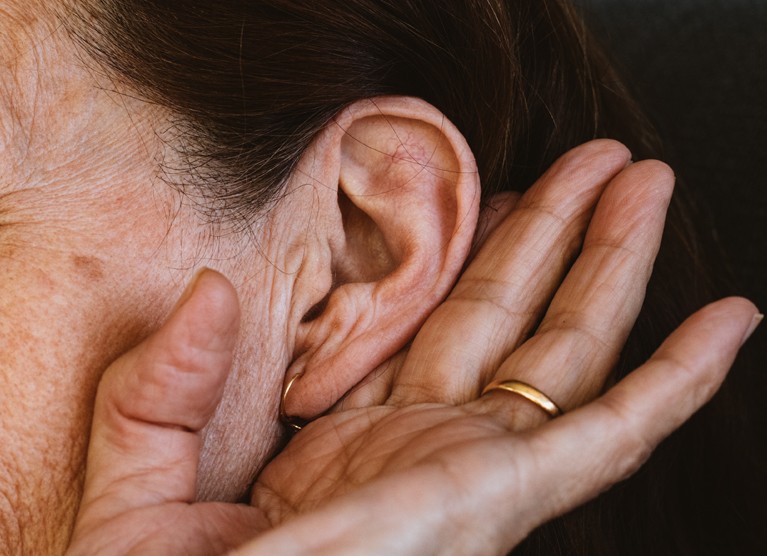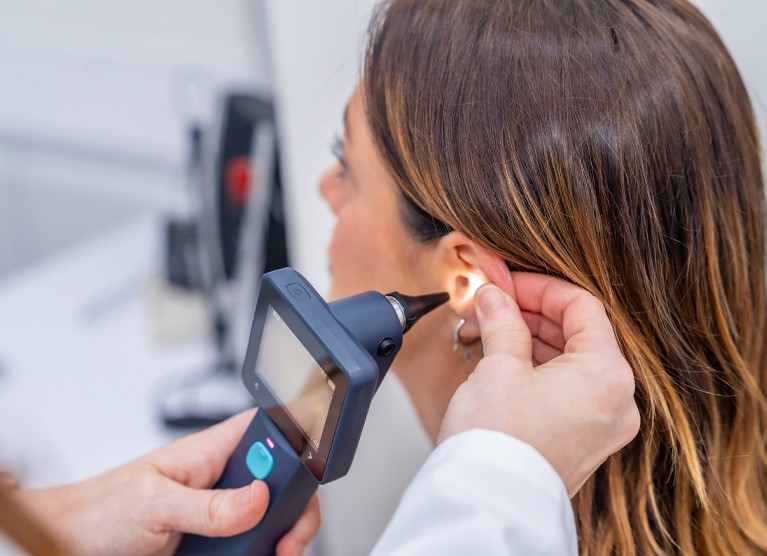Hearing Loss: Myths and Facts
Hearing loss affects millions of people worldwide. Yet despite its prevalence, many myths persist — myths that delay diagnosis, treatment, and improved quality of life.
In this post, we separate fact from fiction, doubling as a resource and reassurance for those who suspect they might be affected.
Why This Matters: The Scope of Hearing Loss
- Globally, over 1.5 billion people live with some degree of hearing loss; among them, 430 million have disabling hearing loss.
- In the U.S., approximately 15% of adults (37.5 million) report trouble hearing.
- Among people aged 71 and older, 65.3% have at least mild hearing loss; by age 90, the rate rises to 96.2%.
- Yet, fewer than one-third of older adults with hearing loss actually use hearing aids.
These numbers underscore how widespread hearing challenges are and how many people are still going without help.

Myth vs. Fact: Common Misconceptions
Below are some of the most persistent myths surrounding hearing loss and hearing aids and the facts you deserve.
Myth: “Hearing loss only affects older adults.”
Fact: Hearing loss can strike at any age. While age-related decline (presbycusis) is common, exposure to loud noise, infections, certain medications, and genetics also play major roles.
For example, prolonged exposure to sounds you must raise your voice to overcome can be damaging over time.
Myth: “Hearing aids will restore my hearing to ‘normal’.”
Fact: Hearing aids are powerful tools—but they’re not a cure. They amplify and clarify sound based on your hearing profile; they do not fully restore natural hearing.
Many patients find that with time and calibration, hearing aids significantly improve quality of life, speech comprehension, and connection with loved ones.
Myth: “If I have hearing loss, I’ll just turn the volume up.”
Fact: Simply turning up the volume rarely solves the core issue. What many people really need is better clarity in specific frequencies, not just overall louder sound.
Moreover, excessive volume can damage hearing further.
Myth: “Hearing loss only affects my ears—it’s isolated.”
Fact: Untreated hearing loss can have cascading effects on health and well-being: cognitive decline, dementia risk, falls, social isolation, depression, and increased mental cognitive load.
In fact, some studies show that treating hearing loss may help slow or reverse some of these downstream risks.
Myth: “Hearing aids are bulky, ugly, hard to maintain, and expensive.”
Fact: Today’s hearing devices are sleek, discreet, and designed for usability and aesthetics.
Modern hearing aids often offer rechargeable batteries, automatic noise filtering, Bluetooth connectivity, and remote support. Maintenance is generally straightforward, and many financing or insurance options exist to improve affordability.
Myth: “I only need one hearing aid.”
Fact: Much like vision, hearing in both ears is important. Using two hearing aids (when recommended) provides better directional hearing, noise reduction, and listening comfort.
Myth: “Lip reading or speaking clearly will be enough.”
Fact: Lip reading alone is often highly unreliable; many speech sounds are not visible on the lips. Additionally, hearing loss often affects frequencies and clarity beyond what can be compensated by clear speech alone.

Why Early Action Matters
-
Better social connection and communication: less strain in conversations.
-
Decreased cognitive load: preserving mental bandwidth (memory, concentration).
-
Reduced health risks: fewer risks of falls, social isolation, depression.
-
Improved long-term outcomes: easier adaptation, better device acceptance.
Delaying diagnosis often means the brain becomes less accustomed to processing sound cues, making later rehabilitation tougher.

Tips for Getting Started
-
Watch for warning signs
- Frequently asking “What?” or “Huh?”
- Trouble following conversations in noise
- Turning up TV/radio more than others
- Ringing (tinnitus)
- Avoidance of social settings
-
Schedule a hearing screening
A licensed audiologist or hearing professional can run tests (pure-tone audiometry, speech recognition, etc.) to pinpoint your hearing profile.
-
Discuss treatment options openly
Hearing aids aren’t one-size-fits-all. Your provider can guide you on style, technology level, fitting, and support.
-
Commit to a trial period
There’s an adjustment phase. Allow yourself time to acclimate, with follow-up visits for fine-tuning.
-
Stay consistent and proactive
Use your devices regularly. Maintain cleaning, battery care, and periodic checkups.
Hearing loss is more common than many realize, but misconceptions still erect barriers to treatment. By busting these myths and embracing the facts, we hope you—or someone you care about—will feel empowered to take that first step toward better hearing.
If you’d like to explore hearing aids, schedule a free hearing screening*, or talk with a Beltone hearing care professional, we’re here to help.

Take Online Hearing Test
Take our free at-home hearing loss test as a first step on your journey to better hearing.


